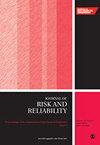基于风险评价的木制品加工企业粉尘爆炸安全优化措施
IF 1.8
4区 工程技术
Q3 ENGINEERING, INDUSTRIAL
Proceedings of the Institution of Mechanical Engineers Part O-Journal of Risk and Reliability
Pub Date : 2023-07-03
DOI:10.1177/1748006x231184517
引用次数: 0
摘要
为有效控制粉尘爆炸事故的发生,研究了适用于木制品加工企业的粉尘爆炸风险评估方法。首先,考虑粉尘的爆炸属性和木制品加工的技术属性,从人、机、环境和管理四个角度构建粉尘爆炸风险评价指标体系。它包括3个一级指标(即:事故可能性、事故严重程度和安全管理制度)、6个二级指标和28个三级指标。采用结构熵权法(SEWM)计算各指标权重。其次,结合关联度矩阵,采用三维矩阵法建立粉尘爆炸危险性评价理论模型;最后,利用建立的模型对某木制品加工厂进行了实证分析。结果表明,该厂总体风险等级为四级,属于较高风险。这一结论与该厂实际运行状况相吻合,表明该模型具有一定的适用性和有效性。本文章由计算机程序翻译,如有差异,请以英文原文为准。
Risk assessment-based optimal safety measure for dust explosion in wooden products processing enterprises
A risk assessment method of dust explosion applicable to wood product processing enterprises was studied to effectively control the occurrence of dust explosion accidents. First, considering the explosive attributes of dust and the technical attributes of wood product processing, a risk assessment index system for dust explosion was constructed from the human, machine, environment, and management perspectives. It comprises 3 first-level indices (namely: accident possibility, accident severity, and safety management system), 6 second-level indices, and 28 third-level indices. The weight of each index was calculated using the structural entropy weight method (SEWM). Second, combined with an association degree matrix, a theoretical model for dust explosion risk assessment was established using a three-dimensional matrix method. Finally, an empirical analysis was conducted on a wood product processing plant using the established model. It was concluded that the overall risk level of the plant was level IV, indicating a relatively high risk. This conclusion is consistent with the actual operation status of the plant, showing that the model has a certain degree of applicability and effectiveness.
求助全文
通过发布文献求助,成功后即可免费获取论文全文。
去求助
来源期刊

Proceedings of the Institution of Mechanical Engineers Part O-Journal of Risk and Reliability
ENGINEERING, MULTIDISCIPLINARY-ENGINEERING, INDUSTRIAL
CiteScore
4.50
自引率
19.00%
发文量
81
审稿时长
6-12 weeks
期刊介绍:
The Journal of Risk and Reliability is for researchers and practitioners who are involved in the field of risk analysis and reliability engineering. The remit of the Journal covers concepts, theories, principles, approaches, methods and models for the proper understanding, assessment, characterisation and management of the risk and reliability of engineering systems. The journal welcomes papers which are based on mathematical and probabilistic analysis, simulation and/or optimisation, as well as works highlighting conceptual and managerial issues. Papers that provide perspectives on current practices and methods, and how to improve these, are also welcome
 求助内容:
求助内容: 应助结果提醒方式:
应助结果提醒方式:


